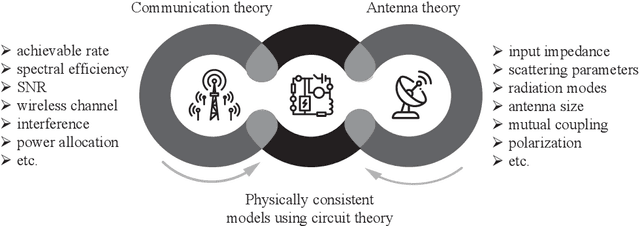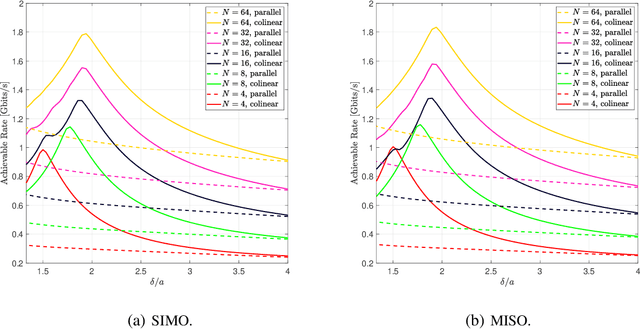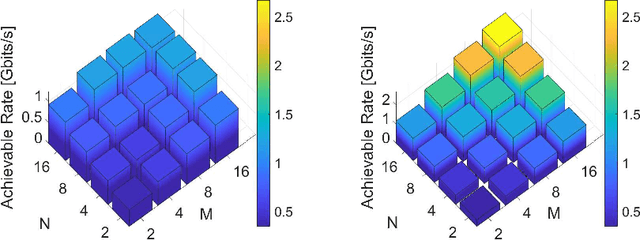Volodymyr Shyianov
Channel Estimation for Multicarrier Systems with Tightly-Coupled Broadband Arrays
Apr 15, 2023Abstract:This paper develops a linear minimum mean-square error (LMMSE) channel estimator for single and multicarrier systems that takes advantage of the mutual coupling in antenna arrays. We model the mutual coupling through multiport networks and express the single-user multiple-input multiple-output (MIMO) communication channel in terms of the impedance and scattering parameters of the antenna arrays. We put forward a novel scattering description of the communication channel which requires only the scattering parameters of the arrays as well as the terminated far-field embedded antenna patterns. In multi-antenna single-carrier systems under frequency-flat channels, we show that neglecting the mutual coupling effects leads to inaccurate characterization of the channel and noise correlations. We also extend the analysis to frequency-selective multicarrier channels wherein we further demonstrate that the coupling between the antenna elements within each array increases the number of resolvable channel taps. Standard LMMSE estimators based on existing inaccurate channel models become sub-optimal when applied to the new physically consistent model. We hence develop a new LMMSE estimator that calibrates the coupling and optimally estimates the MIMO channel. It is shown that appropriately accounting for mutual coupling through the developed physically consistent model leads to remarkable performance improvements both in terms of channel estimation accuracy and achievable rate. We demonstrate those gains in a rich-scattering environment using a connected array of slot antennas both at the transmitter and receiver sides.
Super-Wideband Massive MIMO
Aug 02, 2022



Abstract:We present a unified model for connected antenna arrays with a massive (but finite) number of tightly integrated (i.e., coupled) antennas in a compact space within the context of massive multiple-input multiple-output (MIMO) communication. We refer to this system as tightly-coupled massive MIMO. From an information-theoretic perspective, scaling the design of tightly-coupled massive MIMO systems in terms of the number of antennas, the operational bandwidth, and form factor was not addressed in prior art and hence not clearly understood. We investigate this open research problem using a physically consistent modeling approach for far-field (FF) MIMO communication based on multi-port circuit theory. In doing so, we turn mutual coupling (MC) from a foe to a friend of MIMO systems design, thereby challenging a basic percept in antenna systems engineering that promotes MC mitigation/compensation. We show that tight MC widens the operational bandwidth of antenna arrays thereby unleashing a missing MIMO gain that we coin "bandwidth gain". Furthermore, we derive analytically the asymptotically optimum spacing-to-antenna-size ratio by establishing a condition for tight coupling in the limit of large-size antenna arrays with quasi-continuous apertures. We also optimize the antenna array size while maximizing the achievable rate under fixed transmit power and inter-element spacing. Then, we study the impact of MC on the achievable rate of MIMO systems under light-of-sight (LoS) and Rayleigh fading channels. These results reveal new insights into the design of tightly-coupled massive antenna arrays as opposed to the widely-adopted "disconnected" designs that disregard MC by putting faith in the half-wavelength spacing rule.
 Add to Chrome
Add to Chrome Add to Firefox
Add to Firefox Add to Edge
Add to Edge